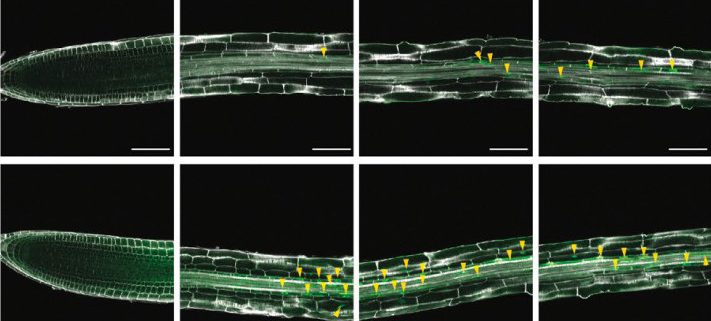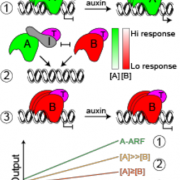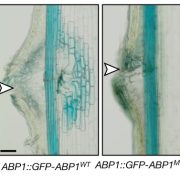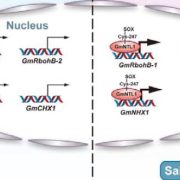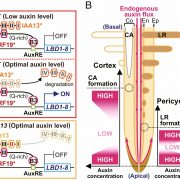Rooting in salt: It’s not all about auxin
Yanxia Zhang1,2
1 Laboratory of Plant Physiology, Wageningen University & Research, The Netherlands
2 College of Agriculture, South China Agricultural University, China
https://doi.org/10.1093/plcell/koad317
Background: Soil salinity causes crop yield losses world-wide. Adjusting plant root growth and development is crucial for plants to cope with salt stress. Lateral roots that branch out from the main roots are important to allow plants to absorb water and nutrients in saline soils. Lateral root development is generally controlled by plant hormones and auxin is a major hormone regulating the formation of lateral roots. In the model plant species Arabidopsis (Arabidopsis thaliana), the auxin pathway-regulated transcription factor LATERAL ORGAN BOUNDARY DOMAIN 16 (LBD16) was reported to act downstream of AUXIN RESPONSE FACTOR (ARF)7 and ARF19 to promote lateral root development.
Question: How is auxin signaling affected by salinity in roots and are there alternative components that contribute to lateral root development during salt stress?
Findings: We discover that salt has a negative effect on auxin signaling in different regions along Arabidopsis main roots, whereas the gene expression of LBD16 is enhanced by salt. In addition, LBD16 mutants have reduced lateral root densities along the main roots in high salt conditions. Thus LBD16 is required for lateral root development in salt, but might be regulated by additional upstream factors besides auxin. Further bioinformatic prediction of gene regulatory networks and experimental validation reveal that salt activates the transcription factor ZINC FINGER OF ARABIDOPSIS THALIANA 6 (ZAT6) independently from ARF7 and ARF19 to modulate the activity of LBD16. This salt-induced module governs downstream cell wall remodeling and promotes root branching.
Next Steps: Salt stress has overall negative effects on auxin-mediated growth regulatory pathways. However, our study demonstrates that salt activates alternative (positive) pathways to contribute to root growth regulation. We need to understand how these auxin-dependent repressive and salt-activated auxin-independent pathways interact to understand how root growth is regulated under salinity.
Reference:
Yanxia Zhang, Yiyun Li, Thijs de Zeeuw, Kilian Duijts, Dorota Kawa, Jasper Lamers, Kristina S Munzert, Hongfei Li, Yutao Zou, A Jessica Meyer, Jinxuan Yan, Francel Verstappen, Yixuan Wang, Tom Gijsberts, Jielin Wang, Nora Gigli-Bisceglia, Timo Engelsdorf, Aalt D J van Dijk, Christa Testerink. Root branching under high salinity requires auxin-independent modulation of LATERAL ORGAN BOUNDARY DOMAIN 16 function https://doi.org/10.1093/plcell/koad317


